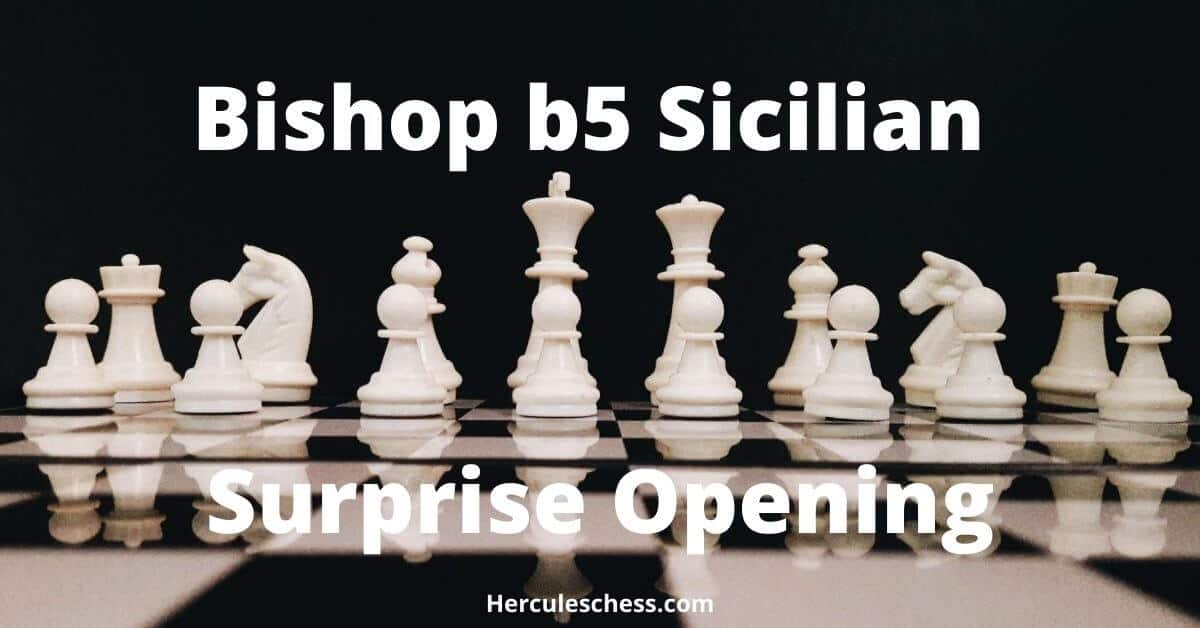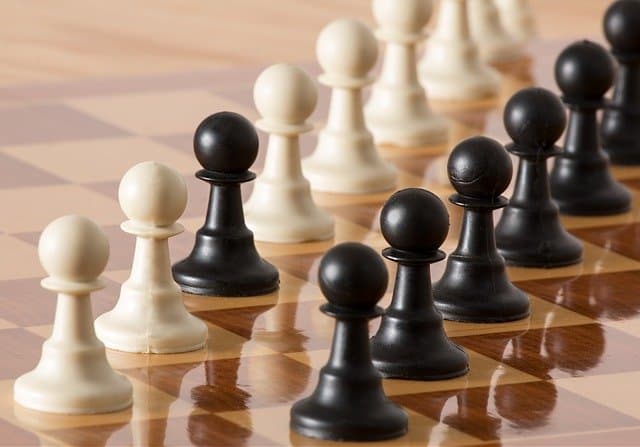The first moves in a game of chess are called the opening. This is the time when players prepare their pieces for battle. Here is the starting position of the chess opening:
The starting position of a chess game
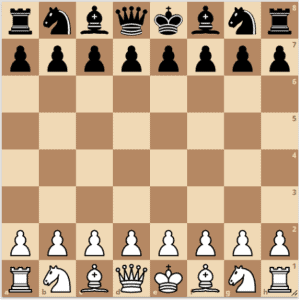
Everything is peaceful. Both armies are standing on their own side of the board. There are no threats. A lot of the pieces can’t even move. All that changes very quickly once the action begins. The armies charge forward. Threats are made and the pieces get more room to move.
Each player does their best to build a strong middlegame formation. That’s what opening strategy is all about. In this article, we give 6 general and essential chess principles for good opening play. With a firm understanding of the chess principles in the opening, you’ll be on your way to mastering the opening phase.
There are 6 general principles you need to know when playing a chess opening. They are as follow:
- Principle of Harmony
- Principle of the Center
- King Safety
- Priniple of Development
- Principle of Time
- Taking the Initiative
1. Principle of Harmony
There are three rules to mastering the principle of harmony:
- Use all your pieces
- Don’t block your pieces
- Don’t block your centre pawns
In music, harmony is when all the notes sound good together. In chess, it’s when pieces work well as a group. This is an important goal in any position.
At the start of a game, you have 16 chess pieces. They’re like a team and you’re the coach. It’s your job to make sure that they all take part in the game and work together.
To understand the rules that follow, you should know the word ‘piece’ has a special meaning. It only refers to queens, rooks, bishops, and knights. This lets us talk separately about the pieces, the pawns, and the king.
Use all your pieces
To get the most from your team of chess pieces, you need to get them all into action. Your aim is to move more pieces out of their beginning position than your opponent. That way, you’ll outnumber the other team when the real battle begins. This is called development!
In this example, white has already moved all their pieces to good spots. Black has played the opening very poorly. The queen and knights are developed, but neither bishop has any freedom and the black king is at least three turns from castling.
Use all your pieces!
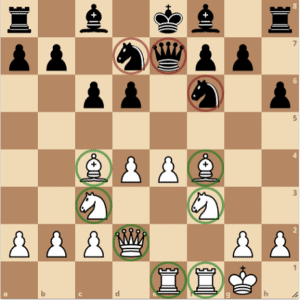
If we only count developed pieces, we see that white outnumbers black by 7 to 3. This adds up to big trouble for black.
1.e5!
The white army is positioned for the attack and charges down the e-file. With a lead in development, the best plan is usually to open up the center.
1…dxe5 2.Bxe5! Nxe5 3.Nxe5 Be6 4.Bxe6
White scores with a knight fork if 4.fxe6 Ng6! or with a discovered attack and pin after 4…Qxe6 5.Ng6.
Don’t block your pieces
It’s important to give all your pieces as much freedom to move as possible. When you bring one piece out, try not put it where it takes away from the freedom of another.

In the position above after 1.e4 e5, the move 2.d3? is not very good for white. Although it opens up a diagonal for the bishop at c1, it blocks the other bishop on f1. A better plan is to play 2.Bc4 first and only afterward d3. Both bishops are happy that way. Another bad idea is 2.Ne2? It gets the knight out but blocks the queen and bishop. 2.Nf3 is a better choice.
Don’t block your centre pawns
In most openings, both center pawns advance, either one or two squares. They need to move to open lines for the pieces and support key squares.
In our previous diagram, white should not play 2.Bd3. It develops the bishop but blocks d-pawn. This makes it harder for white to fight for the center. It also hinders the other bishop, who is stuck behind the d-pawn.
2. Principle of the Centre
There are two rules to obeying the Principle of the center:
- Keep a pawn in the centre
- Centralize your pieces
The most important part of the chessboard is the center, especially the four squares (e4, d4, e5, and d5). From the center, pieces can move in any direction where they are needed. A strong central formation is the best foundation for attack or defense. Whoever controls the center controls the game.
The Central Squares
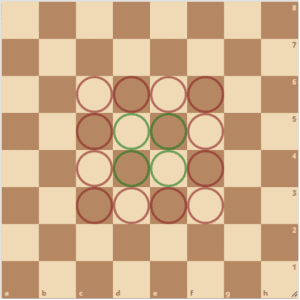
Keep a pawn in the centre
The best way to control the center is to place pawns there. A pawn can help do three things:
- Protect the pieces that are in the centre.
- Prevent the opponent from moving pieces into the centre.
- Stop the opponent from advancing pawns to chase your pieces out of the centre.

This position is from the Queen’s Gambit (1.d4 d5 2.c4 e6 3.Nc3 Nf6)
4.cxd5 Nxd5?
Black should have played 4…exd5 in order to stand firm in the center. Now white takes control. 5.e4! Nxc3 Retreating by 5…Nf6 is even worse 6.bxc3 White stands better because the big pawn center will give the white pieces greater freedom of action.
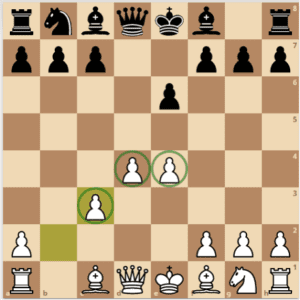
Our next example shows what can happen when we bring our Knights before stationing a pawn center.
(Open the pgn from mobile view)
Centralize your pieces
In general, your pieces should move towards the center in the opening. This helps to control that part of the board and makes them more mobile too. This is especially true for knights. A knight in the corner has just 2 moves; along the side, it has just 3 or 4. However, if we should put a knight in the center, it will reach its full power of 8 possible moves.
The Bishop benefits from centralization too. A Bishop on the side has 7 moves compared to 13 in the center. It’s good to develop your bishops so that they aim through the center.
Rooks control the center best from a distance. It’s difficult for them to find a safe spot in the center because the knights and bishops chase them out. Try to place the rooks on the central files that are open (or will be opened).
3. King Safety
King safety is one of the basic goals of chess strategy. Nothing else matters much if your king is dead. This is why you should plan for his safety right from the beginning of the game. Castling was invented just for that purpose.
There are two basic rules to keeping your king safe:
- Castle
- Don’t move the pawns in front of the castled king.
Castle
Castling does several things to keep the chess troops happy. The King is glad to go where he can have some pawn cover. Staying in the center is dangerous when the center pawns advance and lines are opened. It’s easier to defend the king near a corner too. There are fewer directions to attack him from.
Castling is helpful to the rooks also. The king is no longer standing in their way on the e-file. And the castled rook is brought towards the center. Rooks are powerful pieces that are eager to show their strength on open lines. Don’t leave them moping in the corners.
Don’t move the pawns in front of the castled king
Advancing the pawns in front of your castled king does a couple of bad things. Firstly, it makes it simpler for the opponent to trade pawns. Every pawn exchange opens lines and that usually helps the attacker. It’s a good strategy to keep the lines closed in the area where your king is.
Secondly, some squares around the king are weakened. A weakened square is a spot in our position where our opposing pieces can land safely, without being harassed by pawns. Weak squares are also called “holes”.
The pawns are the best defenders. When they attack a square, the pieces stay away. Every time a pawn moves, he weakens the space behind him. It’s a good strategy not to advance in the area where you are defending.
In this position, white has a winning advantage because the black position is so full of holes. The advance of the g-pawn has put the black king in danger by creating weak squares at f6 and h6. The pawn on g6 also makes it easy for white to open h-file with h5 and hxg6.
On the other side of the board, the black forces are marching against the white king. But he is safe, at least for a little while, behind a sturdy wall of unmoved pawns.
4. Principle of Development
To “develop” means to bring a piece into play by moving it from the square it starts the game on. This is a cool thing to do. The Principle of development follows three rules:
- Develop your pieces
- Give your pieces freedom
- Don’t move too many pawns
Develop your pieces
If you want your pieces to help you win the game, you have to get them out where they can do something. To leave them standing on the back rank is like leaving your star players sitting on the bench. When the game starts, get the team out
It is usually a good idea to develop the knights and bishops first. They’re the pieces that benefit the most from moving off the back rank. Besides, it’s hard to develop the rooks with them in the way! A primary principle of opening play is to get all your pieces developed.
Give your pieces freedom
It’s not enough to simply move your pieces out. You have to develop them into good squares. One way to choose the right spot for a piece is by looking at how mobile it will be. A well-developed piece has a lot of room to move. In general, the more moves a piece has, the stronger it is.
Another thing to consider when you develop a piece is the work it will do. Decide carefully on which pieces you for defense. A defensive job limits their freedom. It is normally better to guard things with pawns if you can. That leaves the big pieces free for the attack.
Don’t move too many pawns
Pawns should only be moved if they help to develop a piece or fight for the center. Usually, two or three pawn moves in the opening are enough to complete your development.
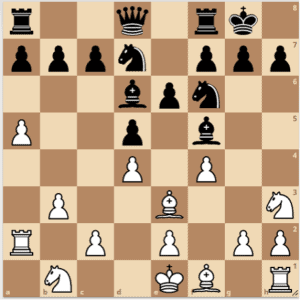
In this example, white has played the opening terribly. Only three pieces are developed and none to good squares. At least five pawn moves were made. Now, look at the black position. All of the knights and bishops are developed well, the king is castled and only two pawns moved. Black has played great.
Related Post: Most aggressive chess openings for White
5. Principle of Time
Chess players use the word “time” in a special way. It has nothing to do with time on a clock. It refers to how many moves it takes to do something. For example, how many moves does it take to get a knight from h1 to a8?
On clocks, we measure time in hours and minutes. In chess, we measure it in moves. The time used for one move is called a tempo. The opening is a kind of race to see which player can get ready to attack the quickest. The side that completes their development in the shortest time is the one that can attack first.
Mastering the principle of time is quite simple:
- Use every move to improve your position
- Develop with tempo
- Don’t move the same piece twice
Use every move to improve your position
Each move is a golden opportunity to make something happen on the chessboard. Always make the most of every turn. Don’t waste a single tempo! When you’re not sure what to do, find your worst piece and help it.
Develop with tempo
When you bring out a new piece and it makes the opponent move one they already had developed, it’s like you get an extra turn. They waste their move on defense and you “gain a tempo”. This can really make you feel great.
But don’t get carried away attacking pieces. You only gain a tempo if your moves also improve your position. Be extra careful with pawns. Don’t move them just to chase pieces. Only move pawns in the opening if they help to develop pieces, control the center, or win material.
Don’t move the same piece twice
There are lots of exceptions to this rule. Sometimes we have to move a piece twice to avoid losing material. And, sometimes we want to move it twice to win material or make a weakness in the opponent’s position.
But try not to move the same piece more than once unless there’s a good reason. One goal of the opening play is to use every tempo to develop a new piece. The perfect way of achieving that is to get them to a good square on their first move.
To avoid losing a tempo, don’t put your pieces where the opponent can attack them with developing moves. Let’s look at this position from the French Defense. (1.e4 e6)
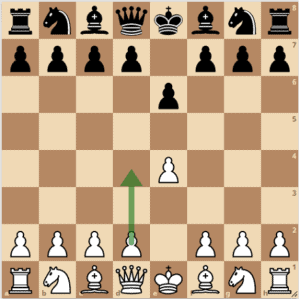
It’s a bad strategy here to play 2.Bc4 because black can reply 2…d5! This useful pawn move opens lines for the black pieces, helps control the center, and wins a tempo by forcing the white bishop to move again.
Another error is 2.Qh5? Early queen move looks aggressive but they’re not good if she gets chased around. With 2…Nf6, black can develop a piece and gain a move by attacking the queen.
Also bad is 2.e5? There’s no good reason to move the e-pawn a second time. It’s better to spend the tempo on a different piece.
White has other lousy moves too, like 2.a3? It doesn’t let any moves out or fight for the center. It doesn’t really improve the position at all. That’s what we call a waste of time. The best move for white is to occupy the center with 2.d4! Developing the Knights by 2.Nf3 or 2.Nc3 is also good. The best move for white is to occupy the center with 2.d4! Developing the Knights by 2.Nf3 or 2.Nc3 is also good.
6. Take The Initiative
Initiative is the power to make threats. Threats force the opponent to react to what we’re doing. Their plans have to wait if we keep them busy dealing with ours. This is how we direct the course of the game. Right from the opening, both sides must fight for the initiative Whoever gets it is the boss. They decide what the other player has to do.
To achieve the initiative, you must:
- Develop with threats
- Weaken the other king’s defense
Develop with threats
As you bring your pieces out, try to make your opponent defend. You can do this by attacking their pieces or by setting up tactics such as forks, pins, and discovered checks. If they have to defend against threats, they won’t have time to attack you. Once some of their pieces are stuck on guard duty, it becomes even easier to make new threats.
Weaken the other king’s defense
The ultimate goal in a game of chess is to checkmate the opponent’s king. Anything you do to make his defenses weaker will improve your chances for a successful attack.
It’s always better to be the attacker. Defending is harder work and leads to more mistakes. Here are some things you can do to make a king less safe:
- Prevent him from castling
- Open attacking lines in his direction
- Destroy or wreck his pawn cover
- Drive him out into the opening
- Eliminate his defending pieces
If you’re brave, use a sacrifice or two!
This position is a game played by world chess champion Wilhelm Steinitz in 1863. He sacrificed a pawn earlier to open lines for a quick attack. Did you notice that the bishop on a3 prevents black from castling? Now he gives up his queen to bring the black king into the open! After 1.dxe6! Nxb3, it’s mate in 6!
Final Verdict – Chess Principles In The Opening
Well, that completes the basic principles and strategies in the opening. I hope that you find them very useful. Remember that these are only general principles and there are plenty of exceptions to the rules. Good players know when to break the rules, but to do that you must first learn how to follow them.
Here is a reminder of the rules in the opening:
- Use all your pieces
- Don’t block your pieces
- Don’t block your centre pawns
- Keep a pawn in the centre
- Centralize your pieces
- Castle
- Don’t move the pawns in front of the castled king.
- Develop your pieces
- Give your pieces freedom
- Don’t move too many pawns
- Use every move to improve your position
- Develop with tempo
- Don’t move the same piece twice
- Develop with threats
- Weaken the other king’s defense
Put them to good use!




